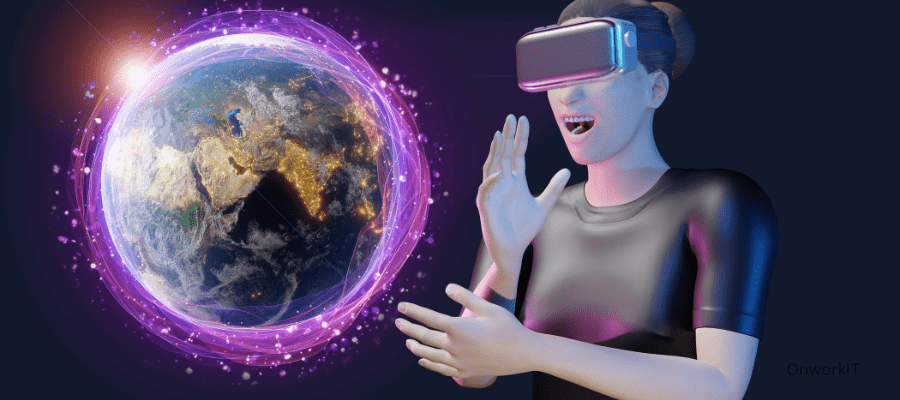Since Facebook founder Mark Zuckerberg announced in late October 2021 that the company would be renamed “Meta” to focus on transforming into a metaverse company, the term “metaverse” has become a hot topic, with increased searches on Google.
The concept of the metaverse combines futuristic and science fiction elements, seeming distant to many. But what exactly is the metaverse? And how might it impact our daily lives?
This article aims to explain the concept of the metaverse in simple terms, discussing potential business opportunities it could create and the challenges it faces.
What is the Metaverse?
The definition of “metaverse” isn’t clear-cut because the concept is still new and evolving. It’s similar to how the term “internet” wasn’t initially clearly defined when it first emerged.
The metaverse can be understood as a vibrant virtual space that supports not only work and social activities but also entertainment and shopping.
In this space, users can feel themselves and others “exist” in a virtual world. They can customize avatars and own digital assets.
For example, the planet Pandora depicted in the 2009 movie “Avatar” can be seen as a representation of a metaverse. In the film, the protagonist navigates and runs in a virtual world through an avatar, despite being paralyzed in the real world.
Virtual Reality (VR) and Augmented Reality (AR)
Key technologies often mentioned in the metaverse include Virtual Reality (VR) and Augmented Reality (AR).

- VR (Virtual Reality) creates a 3D virtual world where users can feel fully immersed through sensory analogs, much like a ritual akin to “observing Yin” in Taiwanese folklore.
- AR (Augmented Reality) merges virtual and real worlds on screens, akin to the ability of those with “Yin-Yang eyes” to interact with supernatural entities.
Origins of the Term “Metaverse”
The term “metaverse” first appeared in Neal Stephenson’s 1992 science fiction novel “Snow Crash,” describing a vast virtual world where people interact through avatars reflecting their real identities.
Metaverse and NFTs
The metaverse is closely linked with Non-Fungible Tokens (NFTs), unique digital assets representing digital works like art, music, or images. Each NFT is distinct and indivisible, unlike cryptocurrencies such as Bitcoin or Ethereum.
NFTs ensure authenticity and ownership of digital assets in the metaverse, becoming a cornerstone of its economy.
Conclusion
In essence, the metaverse isn’t just about gaming; it’s a vast world of various virtual experiences where users can engage in different activities from entertainment to education, from socializing to business.
As this concept continues to evolve, it holds the potential to redefine how we interact with digital spaces and each other, creating new economic opportunities and cultural paradigms in the process.
What Opportunities Could Metaverse Bring? A Look at How Tech Giants Are Approaching It.
Meta (Facebook)
In the tech industry, Meta (formerly known as Facebook) is one of the pioneers driving the development of the metaverse. In 2021, the company changed its name from “Facebook” to “Meta,” symbolizing its full commitment to entering the metaverse.
Meta aims to create a diverse, interactive 3D space that goes beyond traditional social media interactions, offering a more realistic and immersive experience.

Meta’s envisioned metaverse breaks the limitations of current social media platforms like Facebook, where interactions with friends and family mainly involve posts, comments, Messenger chats, and live streams. These interactions are primarily text or video-based, lacking a sense of physical presence and direct interaction, thus appearing somewhat indirect or surface-level.
For Example;
Liking a friend’s photo or messaging on Facebook involves communicating through a screen, lacking the directness and depth of face-to-face interaction. Meta’s metaverse aims to overcome these limitations. In this 3D virtual space, people appear as virtual avatars, enabling more direct and comprehensive interactions.
Through Meta’s virtual platforms, users can participate in various activities as 3D avatars, from social gatherings to work meetings, and even virtual travel and remote family connections.
You can enter a virtual café wearing glasses, appear as your avatar, and invite friends via Messenger to join you. In this space, you can play games, chat, have coffee, just as if your friends were physically present. During this, you can also video call your family on your phone, seamlessly blending the virtual and real worlds.
Moreover, the challenges brought by the COVID-19 pandemic for remote work can also find good solutions in the metaverse.
Currently, remote work involves communication through emails, communication apps, or meeting software. Although it saves commuting time, it lacks social interaction, and bosses cannot monitor employees’ work status, leading many bosses to require employees to return to the office after the pandemic.
In the metaverse, you can set up virtual offices anywhere, such as on mountains or beaches. After setting up the office location, you can invite your colleagues to join.
When everyone enters this workspace, you can have meetings, chat, or work individually, just as in a real office. This not only saves expensive office rent for employers but also saves commuting time for employees, increasing work efficiency.
Meta introduced the “Workrooms” service in August 2021, using VR technology for remote work.
In summary, Meta’s metaverse promises to make future social interactions more realistic. Although its development is still in its early stages, this vision provides us with considerable imagination.
Microsoft
Another tech giant, Microsoft, is actively participating in the metaverse race.
Unlike Meta, Microsoft focuses on enhancing the experience of remote work and virtual meetings, aiming to make them more fun and personalized.
Microsoft’s main strategy in the metaverse revolves around its collaboration platform Teams, particularly Mesh for Microsoft Teams. Microsoft believes that young people today, born in the internet age, need more flexibility and space in their work.
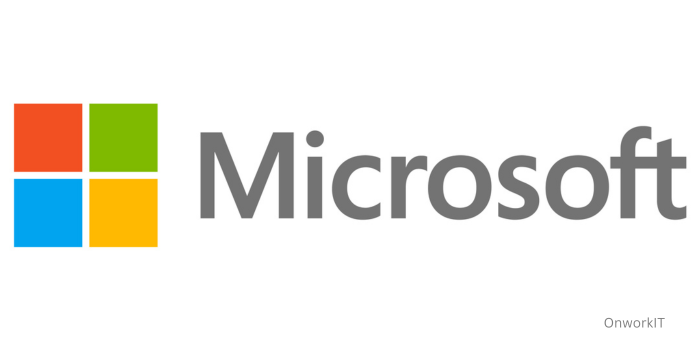
In the Mesh for Microsoft Teams space, you can not only join virtual meetings, chat, and share files and documents but also host large seminars.
The standout feature of Mesh for Microsoft Teams is its ability to create personalized avatars. This means your digital avatar can resemble you closely and mimic your expressions and movements.
HTC
HTC, known for its shift from smartphone manufacturing to participating in the metaverse, focuses heavily on the development of Virtual Reality (VR) technology.
They not only make the virtual world more realistic and interactive but also provide a secure and innovative platform for creators. HTC’s metaverse strategy focuses on creating a diverse virtual platform called “VIVERSE,” aiming to promote interoperability between different vendors and services to build an open and diverse metaverse network.
NVIDIA
As a leader in graphics processing technology, NVIDIA has made significant progress in the metaverse field. Through its Omniverse platform, NVIDIA is building a virtual universe connecting the 3D world, offering new possibilities for industrial simulation and creative collaboration.
Omniverse allows industries to simulate factories or buildings in physical environments and then collaborate on design or manufacturing. For example, Foster + Partners, an architectural firm, allows designers from 14 countries to collaborate on project designs in the shared virtual space of Omniverse.
In addition, it enables humans to collaborate with robots. After training these robots’ brains in Omniverse, robot experts can install these brains into NVIDIA chips and connect them to real robots.
This translation summarizes how Meta, Microsoft, HTC, and NVIDIA are approaching the metaverse, highlighting their strategies and potential impacts on various aspects of life and work.
Introduction
NVIDIA’s Omniverse platform enables designers and engineers to collaborate in a shared, interactive virtual environment, driving innovation and accelerating product development.
This technology’s applications extend beyond industrial manufacturing to include sectors such as architecture, urban planning, and entertainment, demonstrating how metaverse technology promotes innovation and collaboration across industries.
BMW can train and test robots in a virtual factory, and once successful, deploy these robots in real-world physical factories, significantly boosting the efficiency of physical factories.
Where Can Metaverse be Applied?
Metaverse applications are rapidly expanding across various industries. From gaming, education, healthcare to consumer goods, the metaverse provides an innovative interactive way and a new experiential platform.
Gaming
Metaverse applications in the gaming sector are extensive, offering an immersive virtual world where players participate as avatars. For example, platforms like Roblox allow users to create and experience various games, making gaming not only entertainment but also a social and creative space.
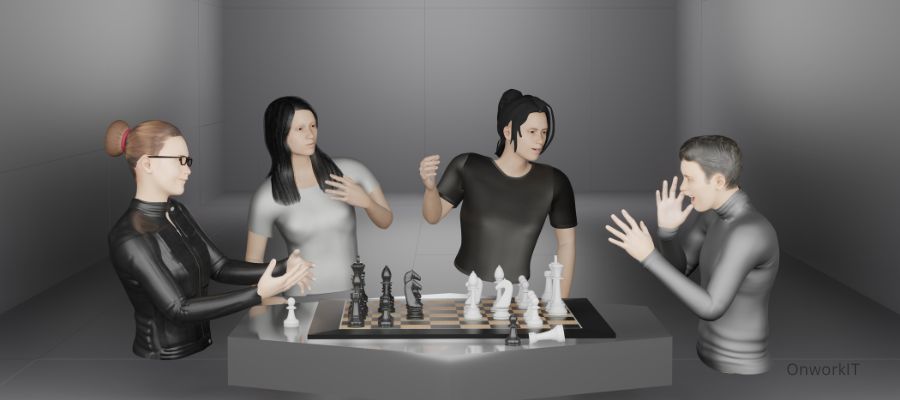
Roblox, a game company based on the metaverse concept, allows users on the platform not only to create games using the Roblox Studio engine but also to play games created by others. Additionally, virtual currency Robux can be used for transactions or chatting with friends on the platform.
Roblox successfully listed in the United States in March 2021. According to statistics published by Influencer MarketingHub in March 2022, Roblox has over 8 million game developers on the platform, offering more than 18 million games, with over 32.6 million daily active users.
Education
Education is another area expected to widely adopt metaverse concepts in the future. The aforementioned game company Roblox has also entered the education field, creating a 3D multiplayer interactive educational space with a goal of having over 100 million students using the platform by 2030.
The potential of the metaverse in education is enormous, making learning more interactive and experiential. Students can experience historical scenes through virtual reality or collaborate on science experiments, thereby enhancing motivation and engagement in learning.
For example, in the past, when learning about ancient Egyptian culture, students could only see pyramid pictures through history textbooks. However, with VR technology, students can experience being inside the pyramid and even see mummies, exploring the world of ancient Egypt.
In addition, students in the future will be able to collaborate on creating rockets and exploring space stations through metaverse platforms, experiences that textbooks cannot provide.
According to a report titled “When Education Meets the Metaverse” published by the Brookings Institution in 2022, education under the metaverse will become more vivid and diverse, transforming students from passive to active explorers.
Virtual Events
Another new trend in the metaverse is large-scale virtual events. Now, attending live concerts, sports games, and large exhibitions requires buying tickets in advance and queuing at specific times.
However, in the metaverse, various large-scale events such as virtual concerts and dances can be held. You can party and dance with others without leaving your home, enjoying an immersive experience.
Meta (formerly Facebook) held three New Year’s Eve concerts in the metaverse at the end of 2021, but unfortunately, these events attracted little attention and ended in failure.
In Taiwan, large-scale events have also begun to use metaverse concepts. For example, the 2022 Taipei International Computer Exhibition (COMPUTEX) was presented as a mixed reality event, with the organizers teaming up with the professional event platform EventX to integrate offline and online activities, allowing more people from around the world to participate.
Medical
From telemedicine to digital twin technology, the metaverse has brought revolutionary changes to the Medical Field, improving the accessibility and efficiency of medical services.
Telemedicine: In the past, we were used to going to clinics or hospitals when we got sick. However, after the outbreak of COVID-19, more people started to experience telemedicine, where simple illnesses can be diagnosed through phone or video calls.
In the metaverse, VR technology can make telemedicine more in-depth, allowing treatment without physically going to the hospital.

For example, if you are in Taiwan but the best specialist for your condition is in the United States, you can enter the doctor’s office simply by wearing a VR device. You can undergo scans and examinations at local medical facilities, and the data will be transmitted to the United States in real-time, where the doctor can conduct a remote diagnosis for you.
Blockchain technology: As mentioned earlier, blockchain can store vast transaction data and has properties that are difficult to tamper with. This feature is used to manage high-privacy data such as medical records and personal health data, which is quite secure.
Digital Twin: Digital Twin means creating a “virtual twin” of any object, process, or system. Applied to metaverse healthcare, it can replicate a virtual patient similar to the real patient, aiming to test the patient’s recovery from surgery and response to specific drugs, which is a safer approach for patients.
Sports
Metaverse Technology makes home fitness more diverse and fun, allowing users to experience various sports in a virtual environment. For example, while exercising on a stationary bike at home, wearing VR glasses can make you feel like you are participating in a triathlon, racing on endless roads.
Meta’s “Virtual Gym” has also opened. Users at home do not need to buy treadmills or stationary bikes. They can simply use VR headsets to exercise and perform various aerobic exercises.
Founder Zuckerberg also shared a video of him “cross-sword” with Olympic gold medalist Lee Kiefer, demonstrating the diverse applications of the metaverse in sports.
Factory Digital Twin
The application of digital twin technology in the manufacturing industry, such as BMW testing and optimizing manufacturing processes through virtual factories.
The use of digital factories is to reduce the trial and error costs of physical factories and improve production efficiency, because processes can be simulated and robots trained continuously in Virtual Factories before applying them to physical factories.
BMW’s digital factory; Image source: BMW official website
Consumer Goods and Luxury Goods
Opportunities follow customer behavior, so successful brands need to continuously understand where customers go and what their needs are. Many brands have already entered the race in the virtual world.
According to Morgan Stanley’s research, the business opportunities for luxury goods in the metaverse could reach up to $50 billion by 2030.
Brands like Gucci have begun to explore business opportunities in the metaverse by expanding their market influence through virtual goods.
For example, luxury brand Gucci launched a digital version of the Dionysus bag on the Roblox gaming platform, priced at a high of 350,000 Robux coins, equivalent to approximately $4,115 USD, even more expensive than the bags in the real world.
Gucci launched the Dionysus bag in the virtual world, World Footwear.
Controversies of the Metaverse?
The rise of the metaverse has brought a series of controversies and challenges, especially in terms of security, privacy protection, and health effects.
Security
In the virtual world, crimes similar to the real world, such as fraud and harassment, have become serious issues. For example, there are reports of individual women being sexually harassed after joining the virtual world, showing that the regulation of criminal behavior in the metaverse still needs to be strengthened.
Londoner Nina Jane Pately wrote in her article that within 60 seconds of joining the virtual world, she was verbally and sexually harassed by 3-4 male avatars, which was a nightmare.
In 2003, the game “Second Life” also reported users using game currency for Ponzi schemes.
In the virtual world, who will control criminal behavior and maintain order remains an unresolved issue.
Privacy Issues
With technological advances, user behavior and preferences can be easily tracked, leading to concerns about privacy protection on metaverse platforms like Meta. Personal privacy in the virtual world may face greater risks, especially in the absence of corresponding privacy laws and protections.
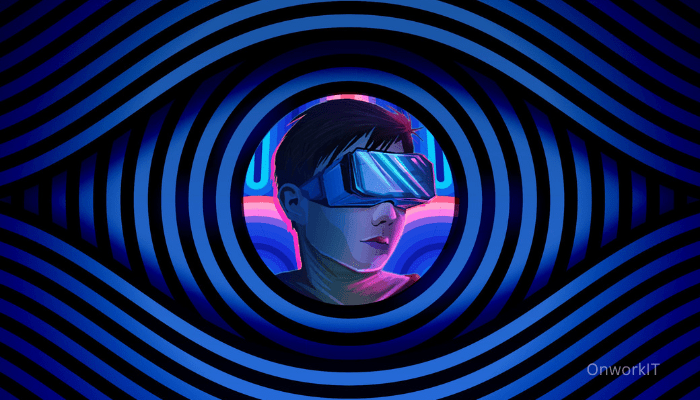
Similar to Facebook’s privacy controversies, many people hold a distrustful attitude towards Meta’s privacy protection. If privacy protection in the virtual world cannot keep up with technological changes, the possibility of human tracking will increase.
Just as Facebook can track users’ preferences and interests through their behavior, in the future, Meta may even be able to track users’ eye movements and facial expressions. Personal privacy in the virtual world is almost non-existent.
Therefore, privacy protection is a crucial issue that all metaverse platforms must pay attention to.
Health Issues
The physical and mental health problems caused by the virtual world to humans are another issue of concern.
Long-term use of VR devices may have adverse effects on physical and mental health, such as dizziness and neck discomfort. In addition, studies have shown that the immersive experience of the virtual world may be related to certain mental Healthcare problems, especially concerning the impact on young users.
Research has already demonstrated a relationship between the virtual world and psychiatric disorders, especially those involving fantasy and hallucination aspects.
A study, Internet addiction problems (PIU) were measured in 100 users aged 20 to 30: depression, anxiety, and schizophrenia features, with about 30% of them showing problems with PIU.
Addition, adolescent internet addiction is also a problem that causes headaches for many parents and teachers.
What Challenges Does the Metaverse Face?
Despite the attention and investment from many tech giants, the metaverse still faces significant challenges in its development process.
New York City’s Future Today Institute director Melanie Supin predicts, “By 2030, a large part of the population will enter the virtual world in some way.”
Even though many experts and tech giants are optimistic about the development of the metaverse, it is still in its early stages of development, with many challenges, including hardware, technology, regulations, and user acceptance.
Hardware
Currently, entering the metaverse requires wearing expensive equipment such as VR headsets. Since devices cannot yet create the same life as the world, the return of investment in this world.
Technology
In terms of technology, one of the biggest challenges among various metaverse platforms is the lack of interoperability and standardization.
The insufficient interoperability between metaverse platforms is a major challenge. Similar to the internet, the metaverse requires universal standards and languages to ensure interoperability and continuity across different platforms.
Imagine the metaverse as a shopping center built by different brands, each representing a different metaverse platform. Currently, these brand stores are not connected, meaning items you buy in one store, like virtual clothes or cars, can’t be transferred to another store of the same brand in a different shopping center.
It’s like using a gift card from one supermarket that can only be used at that specific supermarket, not at other chain stores of the same brand. To enhance user experience, the metaverse needs to establish standards similar to a “universal gift card,” allowing users to freely transfer resources and purchased items between different platforms.
Regulations
With the emergence of the metaverse, existing laws need to be updated to address new challenges, especially in terms of privacy, security, and intellectual property rights.
User Acceptance
Whether the metaverse can gain widespread acceptance is still unknown. Users may be skeptical of new technologies or prefer real-world experiences.
For example, Mark Zuckerberg’s virtual New Year’s Eve concert in the metaverse ended in failure. It raises questions about whether the concept is too advanced or if people still prefer physical experiences. Time will tell.
During the pandemic, many people were stuck at home for a long time and started to miss the joys of going to the office or enjoying outdoor activities. However, some people have become accustomed to remote work and may not want to return to physical offices.
Technology can slowly change human behavior, but there are some human needs that technology cannot satisfy. User acceptance will be a critical factor in determining the success of metaverse development.
Future Vision of the Metaverse
The metaverse is still in its early stages of development and is expected to mature over the next 10 to 15 years, with considerable uncertainty remaining.
However, many tech giants are optimistic about metaverse development and are investing heavily in related equipment and platforms, such as Facebook, Microsoft, NVIDIA, and HTC. The concept of the metaverse is gradually being applied in various fields including gaming, education, healthcare, manufacturing, and events, offering endless business opportunities in the future.
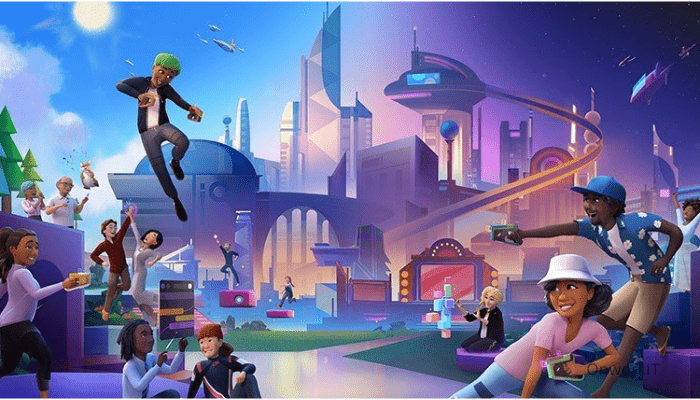
Challenges that the future metaverse must overcome include hardware, technology, regulations, and ultimately, user acceptance.
Regarding the metaverse, we can maintain a cautiously optimistic attitude, continue to monitor its development, and personally explore it to grasp the business opportunities it offers. After all, it has the potential to truly transform the way humans live in the future.









